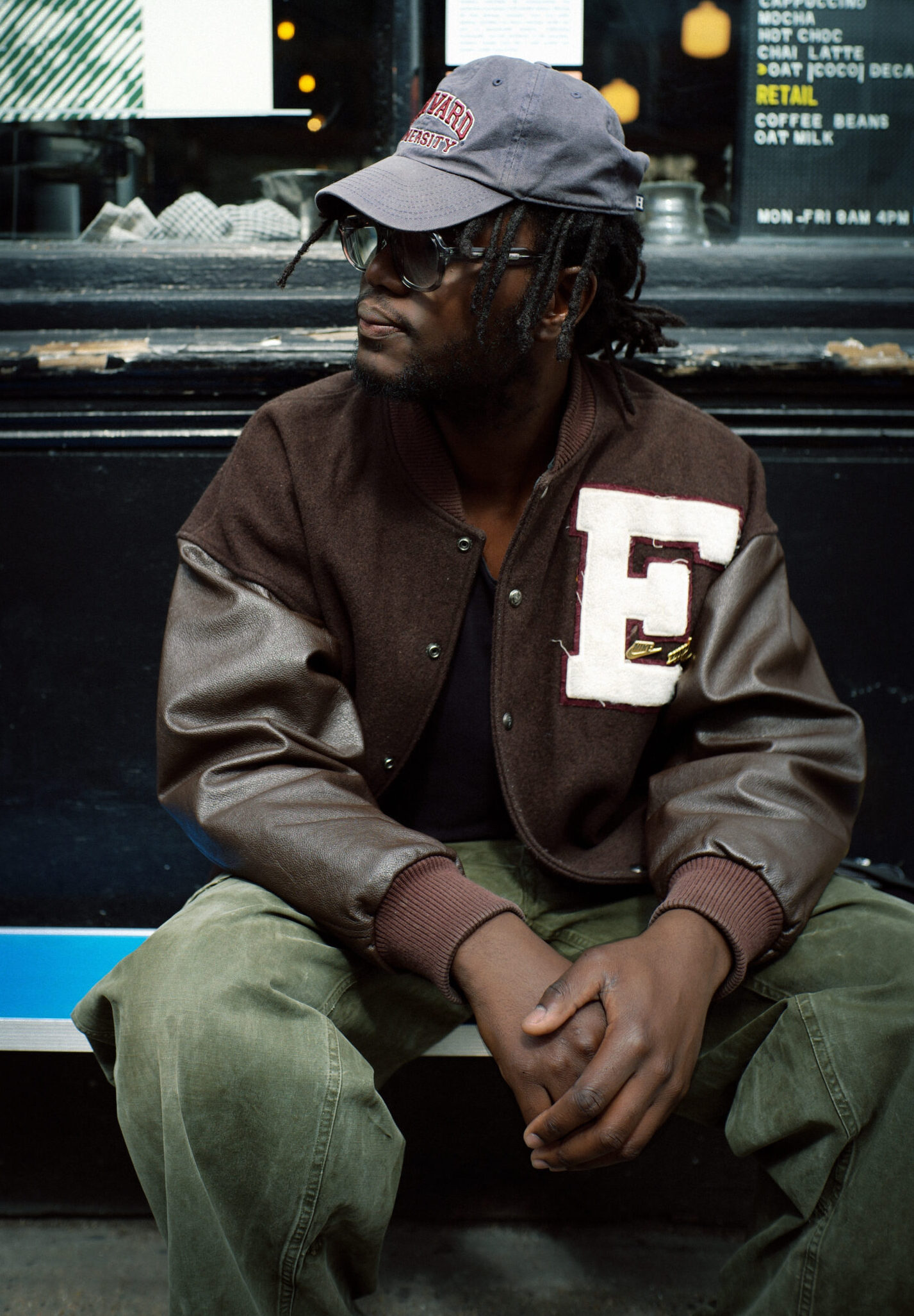Witness the visionary wisdom of the Black is King director

Dutch-Ghanaian filmmaker Emmanuel Adjei has a critical mind and clear vision—qualities that have certainly proved rewarding in the past few years. The artist’s creative output has been sky-high, from directing music videos for the likes of Sevdaliza and Madonna to working on Beyoncé’s iconic visual album Black Is King in 2020. It’s the themes of identity, power and displacement that unite his work—which is no surprise: “I’ve always been forced to be self-reflective,” he says. “Each time I walk down the street, I’m confronted with [the reality of] being a Black man.”
Let’s start at the core of what you do. How did you begin using visual art as your primary medium?
From a young age, I was always interested in painting and photography because I could lose myself in those images. It was later in my [fine arts] study that I saw visual art as a possible future. There I learnt the basic principle about how an object relates to its context. That is a fact which can be applied to any art form, but I also apply it to myself as an artist— I question how I can relate to my own context, as an artist, a human being, and a Black man.
There’s a continuum that runs through your projects: identity, power, freedom. How do these themes figure in your life and your work?
Growing up both Ghanaian and Dutch raised a lot of questions about which cultures I identified with. Experiencing this ‘duality of self ’ has triggered me creatively, as my work has become a vehicle to re-examine my heritage. All the themes I touch in my work are the things I find in everyday life.
Within the ‘dual self ’ there comes the notion that we build identities through wearing ‘masks.’ Could you talk us through this idea?
We have these masks that we’ve been given by birth. They are not only your skin colour but also your gender, religion, sexual preference, and so on. They tell us a lot about how we deal with things from the inside. We also need them to nurture ourselves physically.
So they have multiple roles?
Yeah. We also wear multiple masks, and nowadays we have our virtual masks too. How do we want to profile ourselves on social media? That’s a big mask, but one which we’ve accepted is part of us.
And this creates conflict…
Sure. As an artist, specifically one that happens to be Black, I’m categorised by the work that I make. Sometimes I try to utilise it to my advantage to get a message across. But I still have a huge responsibility to wear the right mask at the right moment, because the gaze that I have as a man, artist and human being —all matter.
It’s something I’ve been constantly conscious of in my work, because my art speaks about those masks —it aims to convey to an audience how significant a role they have in shaping our identities
Your work uplifts Black voices through storytelling. How central are history and tradition to this?
My work is about showing history, both personal and general, in all its layers. It’s about telling the stories that haven’t been written, or those we didn’t know about. I aim to create a platform where they can all collide and be next to each other, so that history is not a one-way story. My primary intention is to show the Black experience, and give the audience more tools to understand where history, tradition and certain values come from. Yet because this has always been in the shadows of whiteness— something I refer to as ‘default’ —the moment I try to empower the Black community it has the effect of dismantling whiteness. Stories are culture, and culture is history. It’s just a way of framing history in a collective wisdom into one piece. [In my work] it’s more about striking the right emotional chord so that emotion becomes a tool that is used to create narratives.
How do you create an atmosphere that furthers these narratives?
It’s about creating an illusion. For example, a Rothko painting is very atmospheric and you can see right into the emotion even if it’s just a bunch of colours. For me, that atmosphere is energy and if you under- stand how energy works, then it’s something you can use. This also comes with responsibility, because it’s never my intention to create bad energy.
Black is King was monumental. What was the message?
This film shows that anyone, not just Black kids but those from all minority groups, is able to see there is a narrative which centres around them—one in which they can be a king. Another big message I wanted to convey was “never stop dreaming, never stop visualising and always think big.” It’s terrifying sometimes, but you only live once (in this life…)
It’s hard to top Black is King, but what’s next?
The next step for me is to work on longer-form projects. I feel like I’ve touched quite a few themes now, so the challenge is to bring them together in a film or TV series.
The theme of our issue is RISE. What do you think creatives can do in today’s world to help rise to a better future?
It’s two things. First, don’t be afraid to collaborate. What I’ve learned from collaborating is that you really enrich your own creative process. That is the foundation to make great work which will make the world a better place. Secondly, be aware of your responsibility. It might sound a bit corny, but we all have a responsibility and if each of us acts responsible, then we can go quite far.
Words by Rose Holmshaw
This interview was first published in Glamcult issue #134 ‘RISE’ – OUT NOW
Notifications